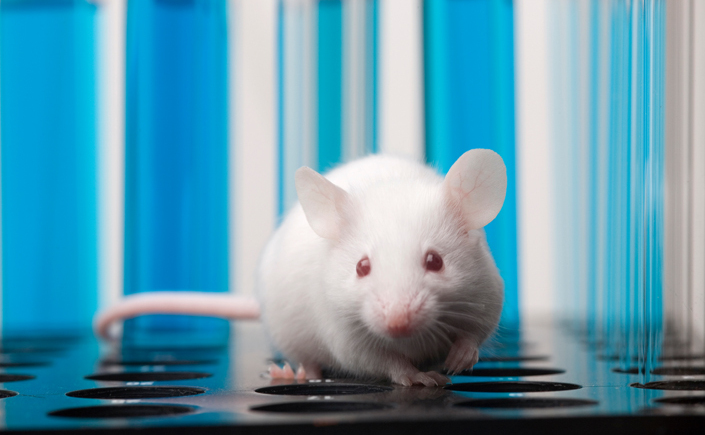
Researchers have long noted disparities between the functioning of the human immune system and that of laboratory mice. Could it be because, unlike us, they live in antiseptic cages, shielded from exposure to infectious organisms?
A landmark, University of Minnesota-led study lends credence to that idea. It has found that immune cells of lab mice bear relatively little resemblance to those of adult humans. Instead, they resemble the immature immune cells of newborn babies, who also have been sheltered from the unhygienic real world. But when lab mice were cohoused with less pampered “dirty” mice from pet shops, their immune systems matured to a state much more like that of adult humans.
While not discounting any previous work with lab mice, the researchers make the case that studying cohoused mice “could provide a relevant tool for modeling immunological events in free-living organisms, including humans.” The work is published in Nature.
Immune Systems Learn by Experience
“There’s increasing concern about the disparities between mice and humans,” says study co-author David Masopust, an associate professor of microbiology and immunology. “But lab mice have many advantages [over humans as research subjects]. Aside from ethical considerations, lab mice are inbred, leading to more predictable immune responses. The issue was to see if [the disparities] were an issue for all mice or lab mice in particular.”
“Inbred mice allow for efficient experimentation, but we have to ask whether we’re locked in a model of the human immune system that’s not very good, or whether we can improve it by changing the environment,” adds co-author Stephen Jameson, a professor of laboratory medicine and pathology and, like Masopust, a member of the U’s Center for Immunology.
“If so, says Masopust, “the power of a genetically defined system—as lab mice currently have—can be retained.”
The researchers and their colleagues examined cells of the immune system found in the lining of the cervix, an internal tissue that is normally exposed to all kinds of microbes. They discovered that the cells of lab mice bore the hallmarks of having never encountered pathogens or other microbes, including a lack of “first responder” cells. The cervical immune cells of pet store mice, however, did carry the markers of mature warriors, similar to immune cells from adult human cervical tissue.
And in a Crash Course Too
The researchers reasoned that intimacy with “dirty” pet store-raised cage companions could transfer microbes to the sheltered lab mice and give their immune systems the challenge they needed to develop to maturity.
Sure enough, after 52 days of co-housing, the lab mice’s immune systems took on characteristics of pet store mice’s systems, notably by producing mature B cells and T cells. The appearance of both these immune cells signaled that the immune system had undergone a general maturation.
But while the immune system changed in cohoused mice, the researchers had to make sure the transformation improved the similarity to humans. It passed the test, in part because lab mice cohoused with pet store mice acquired the latter’s pattern of gene activity, which matched that of adult humans—but was the opposite of newborn humans.
The researchers also asked if cohousing could lead to a general improvement in the functioning of lab mice’s immune cells. To do that, they infected pet store mice, cohoused (lab) mice, and regular lab mice with a bacterial pathogen none had ever encountered. Three days later, the livers of pet store and cohoused mice showed more than a 10,000-fold reduction in bacterial burden compared to lab mice. Thus, cohousing can train the cells of the mouse immune system to respond to novel pathogens.
Curtains for Conventional Studies?
None of this necessarily means any research done with lab mice must be thrown out.
“Clean mouse research is good, but dirty mouse research adds something, and we hypothesize that there are many cases where dirty mice will be more predictive [of human responses],” says Masopust. “For example, if you make a vaccine that prompts a good immune response in a clean mouse, but after spending a lot of time and money on clinical trials it doesn’t do so in humans, it may have been better to test first in dirty mice, where you might not have seen a response. ”
If cohoused mice do confirm results in clean mice, that will be good, notes Jameson. But if not, “we now have a way to increase the model’s predictive capacity. So studying dirty mice is a win-win scenario.”
In addition to being published in Nature, this research has been cited in the following publications: Science Magazine, The Economist, The Scientist, Cosmos, Science Daily